Today, I’m checking in with the data behind a question I get asked often. Almost every week, a reader or journalist asks me why modern movies aren’t as original as they used to be.
So I turned to the data on almost 60,000 movies to find out where their scripts came from.
We have to start by defining terms. When I say a film is an ‘Original’ movie, I am purely referring to the provenance of the script. There is an adjacent topic about how unoriginal movies can be despite being ‘Original Screenplays’ (I’m lookin’ at you, Rebel Moon), but today, we’re focusing on whether the filmmakers had to license a preexisting piece of work in order to get their film to market.
Where do movies come from?
This may surprise some, but since 2000, just over half of all movies released have been original screenplays.
The most common source for adapted screenplays was real-life events, accounting for almost a fifth of movies made between 2000 and 2023. (Typically, in these cases, the filmmakers will have paid for the rights to a nonfiction book or two that covered those events, but we will classify that as ‘based on real-life events’ in this analysis.)
Other sources include fictional books/articles (8.9%), previous movies (11.8%), stage productions (including plays, musicals, and dance performances) (1.5%), and TV/Web shows (0.9%). In the chart below, ‘Other’ includes myths, legends, poems, songs, games, toys, and more.
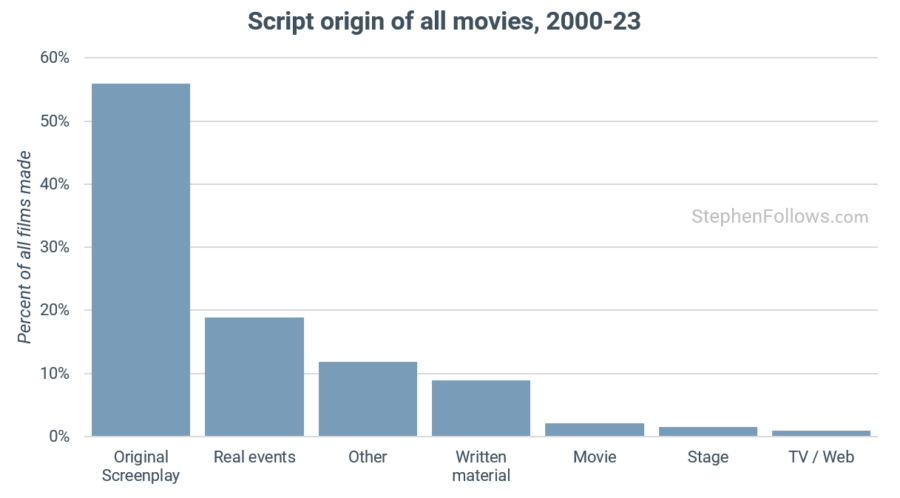
How has this changed over the years?
Forty years ago, about the same proportion of movies being made were original screenplays as they are today. That’s quite surprising – both because I assume that many people expected it to be lower in recent years, but also because little stays the same in the film industry over such a long period of time.
But when we look at a time series by year, we can see that it hadn’t plateaued. During the late 1990s and 2000s, original screenplays declined markedly and only rose again in the 2010s.
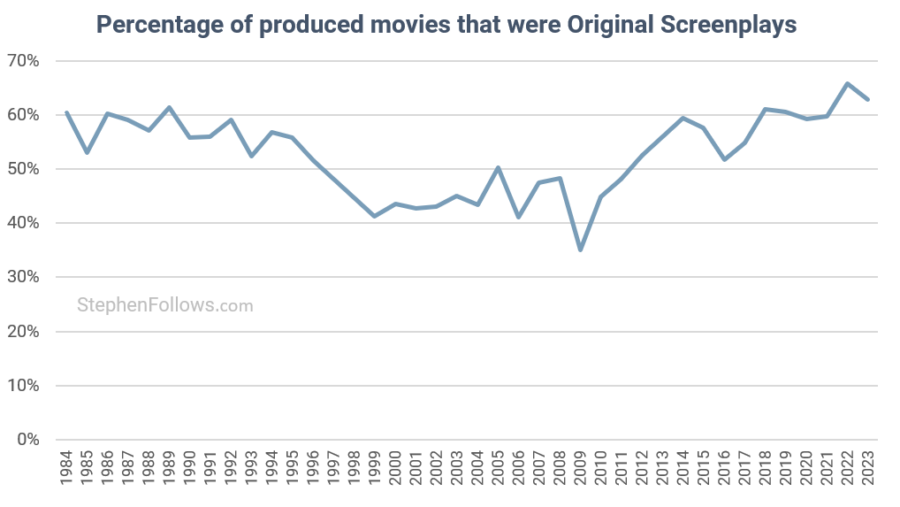
The story of movies based on real-life events could not be more different. Here, we see a steady rise over the same period, from one in twenty movies in the 1980s to almost one in four in the 2020s.
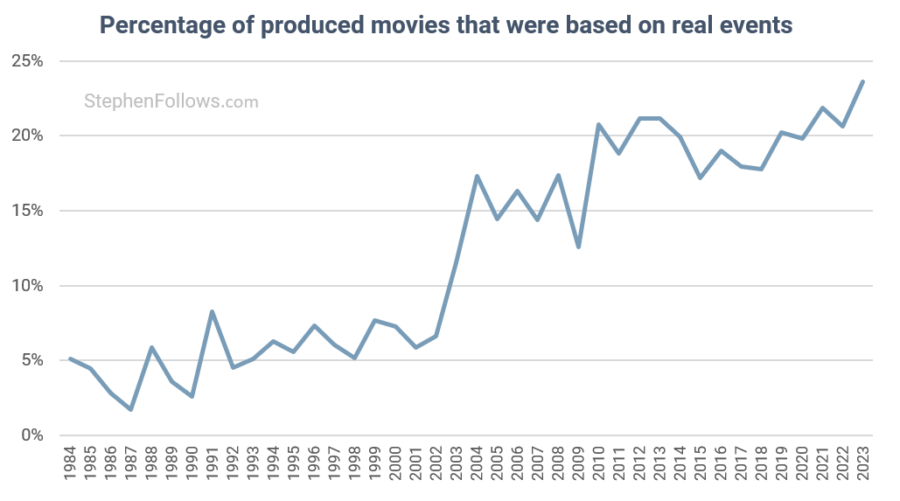
Why does this feel… off?
At this point, you may be wondering why, instinctively this feels different to what you were expecting or feel you’ve noticed at the cinemas.
That’s because we’ve been looking purely at the number of movies made. But not all movies are created equal. The bigger a movie is, the more likely it is to grab your attention and be an adaptation.
As the chart below shows, original movies take a disproportionality smaller percentage of the box office than they do of the production figures. While 55.9% of movies made during 2000-23 were original screenplays, together they only account for 42.3% of the box office takings.
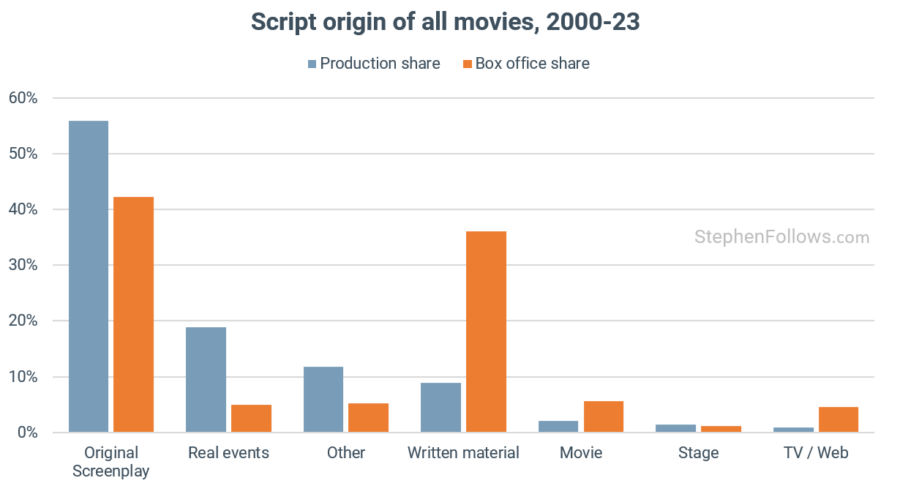
So let’s go through the same charts we saw previously, but add on the box office share and see if this makes more instinctive sense.
While the number of movies based on original screenplays has been increasing since the late 2000s, their box office share has continued to fall. In 1984, 73% of the box office were original screenplays, whereas forty years later in 2023, that figure was just 30.6%. And that’s despite their production share being similar (i.e. 60.4% vs 55.9%).
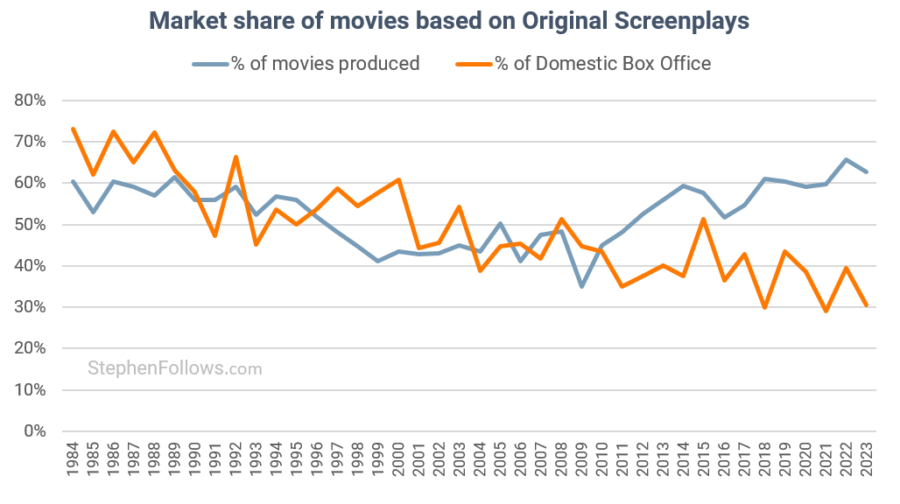
The story behind movies based on real-life events also shifts when we take into account the box office. While there has been a big boom in such movies being made, they haven’t made the same level of impact on the financial side of the industry.
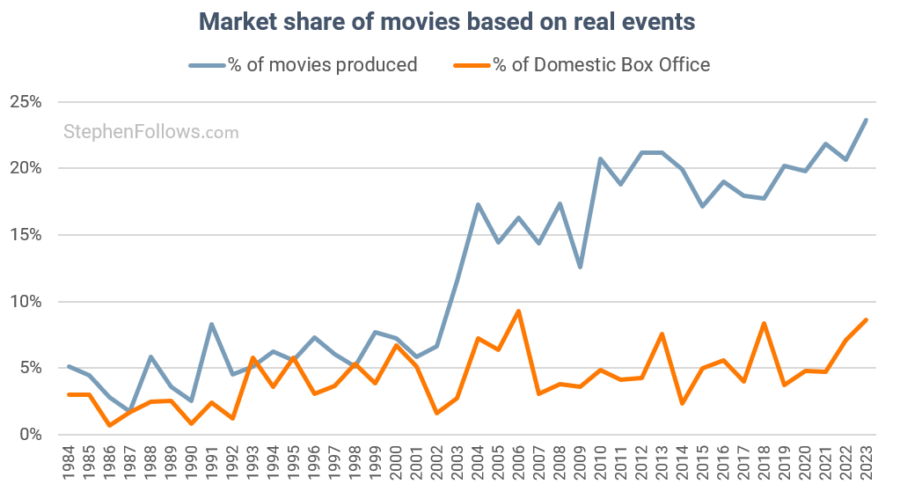
We’ll end by looking at the production and performance of movies based on written material. This is the inverse of what we’ve just seen with ‘real-life movies’ in that their production has decreased but their box office market share has grown.

Notes
The core of today’s data came from Opus Data / The-Numbers, with additional data from IMDb, OMDb, Wikipedia, and my own datasets. The hard work of determining the origin of each movie was done by the talented folks at Opus Data. It covers 58,900 feature films, released in the US between 1974 and 2023, inclusive. Box office here refers to the Domestic Box Office, i.e. the US and Canada.
Epilogue
There is a deeper conversation to be had around the idea of originality. Avatar (2009) is officially an ‘Original Screenplay’, but I think most viewers would concede it doesn’t contain much we’ve not seen many, many times before. On the other end, The Dark Knight (2008) is a sequel to a reboot of a movie of a comic, but its script doesn’t suffer from this convoluted route to the screen.

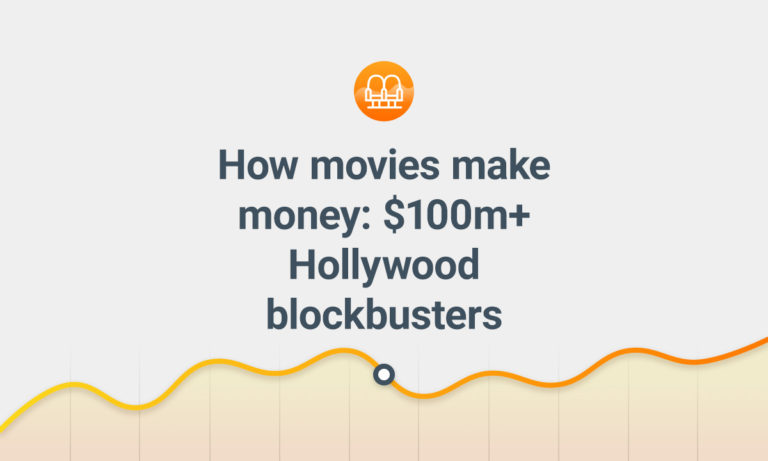
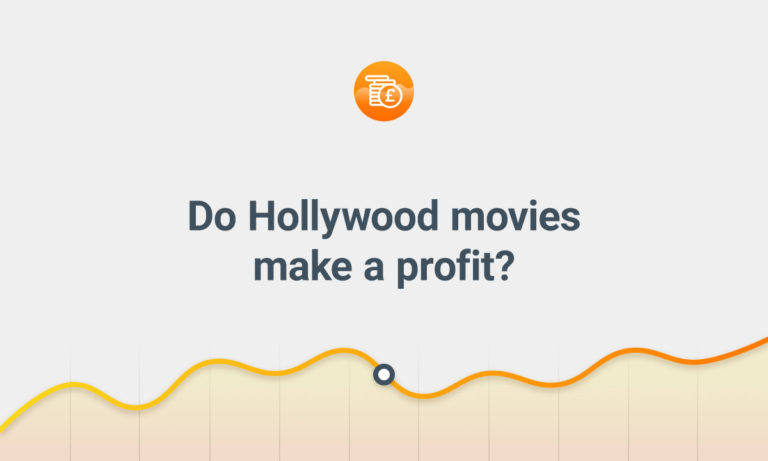
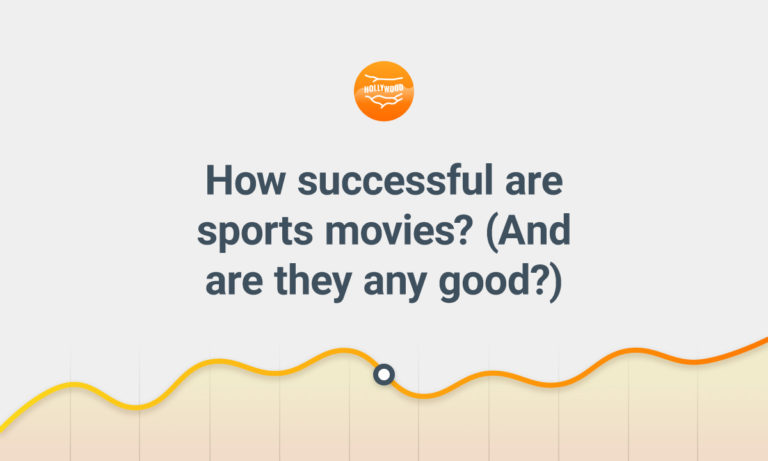

Comments
I am so annoyed with all these “inclusive” films in dramas. It is disturbing to see minority actors work in movies that should be historically correct and not politically correct.
There is something for everyone, let’s stop pushing the agendas that basically are immoral to change history.
Let’s get back to real comedies that made us laugh, like Blazing Saddles, Three Amigos, Vacation, Ocean’s Eight, Grown Ups, Death Becomes Her, It’s a Mad, Mad, Mad World, Knives Up.
If I see one more Dooms Day or Horror Film, or pushing pronouns or trans messages to children, I’ll vomit.
Amen! I’d also like to see the return of masculine, straight and ambitious men!
In the last 10 years, men have been pushed away from playing generals, captains, lieutenants, detectives and warriors. They are casting young women in these roles and making the men who are twice their age and more experienced second in command.
These young female characters consistently put down and ignore the warnings of the older men!
So basically the female writers have Daddy issues and are projecting them in the movies!
Look at the Barbie movie, yes it made $1 Billion at the box office, but the movie with full of feminist propaganda and was a PG-13 movie because of unnecessary adult language. Shouldn’t a Barbie movie be a “U” aka “G” rating or “PG” at best? Why wasn’t it set totally in the Barbie world with little girls adventuring with Barbie?
Dear Stephen
Another fascinating research makes an out of the box obliquous view of moviemaking so very enlightening about creative versus financial and about our trend perception.
I missed the overseas aspect of this research: in this present one only US movies were included?
Thanks from Rio
Hi Roman. Thanks for the kind words. This is all films on the Opus database, so while it’s not officially only US films (a) it will be all US films; and (b) it will only include non-US films if they interacted with the US exhibition/distribution sector in some way. In the past that would mean a Domestic theatrical release but more recently that will also include Home Entertainment and Streaming.
Sorry to see your detailed analysis hijacked by weirdos whining about “woke” movies.
Not at all what this site or post is about. Consider deleting this as it feels like spam.
Anyway, really surrpised to see how many movies come from original screenplays and how little box office revenue movies based on real world events generate.
I don’t see them as spam. While I don’t share the same perspectives, they are real people sharing their thoughts on the shifting content of movies over time – valid comments on the article. (And have actually sparked an idea for a future research project I might be able to do). I try not for my site to have any political leanings – just observations of what’s happening and to host a conversation as to why and how the data may inform our future actions.
Yes, you’re right about the surprising volume of Original Screenplays. I think we all build up a firm expectations of how things are due to our own cinema experiences and that doesn’t always align with the data. I’m constantly having to check my own guesses against what’s really going on! This is part of what makes it fun